Abstract
1. Electrical recordings were made from antidromically identified supraoptic and paraventricular units during intracarotid injections of hypertonic and isotonic sodium chloride solutions in rats.
2. The blood concentrations of vasopressin and oxytocin were estimated by bio-assay before and at different intervals after similar injections.
3. Although a significant change in the action potential activity of the supraoptic nucleus was associated with hormone release, the results were not entirely consistent with a simple relationship between action potential activity and hormone secretion. Firstly, although some units were excited by the stimulus a substantial number were inhibited. Secondly, the blood concentration of the hormones, particularly ADH, remained elevated for longer than might have been expected if additional hormone had ceased to be secreted as soon as firing rates had returned to control values.
4. There were substantial differences between the initial blood concentrations of vasopressin and oxytocin but the firing rates of units in the supraoptic and paraventricular nuclei appeared to be the same.
5. Although significantly less paraventricular than supraoptic units were affected by hypertonic injections the blood concentration of oxytocin was increased by a factor of 8 whereas that of vasopressin was increased by a factor of 2·7.
Full text
PDF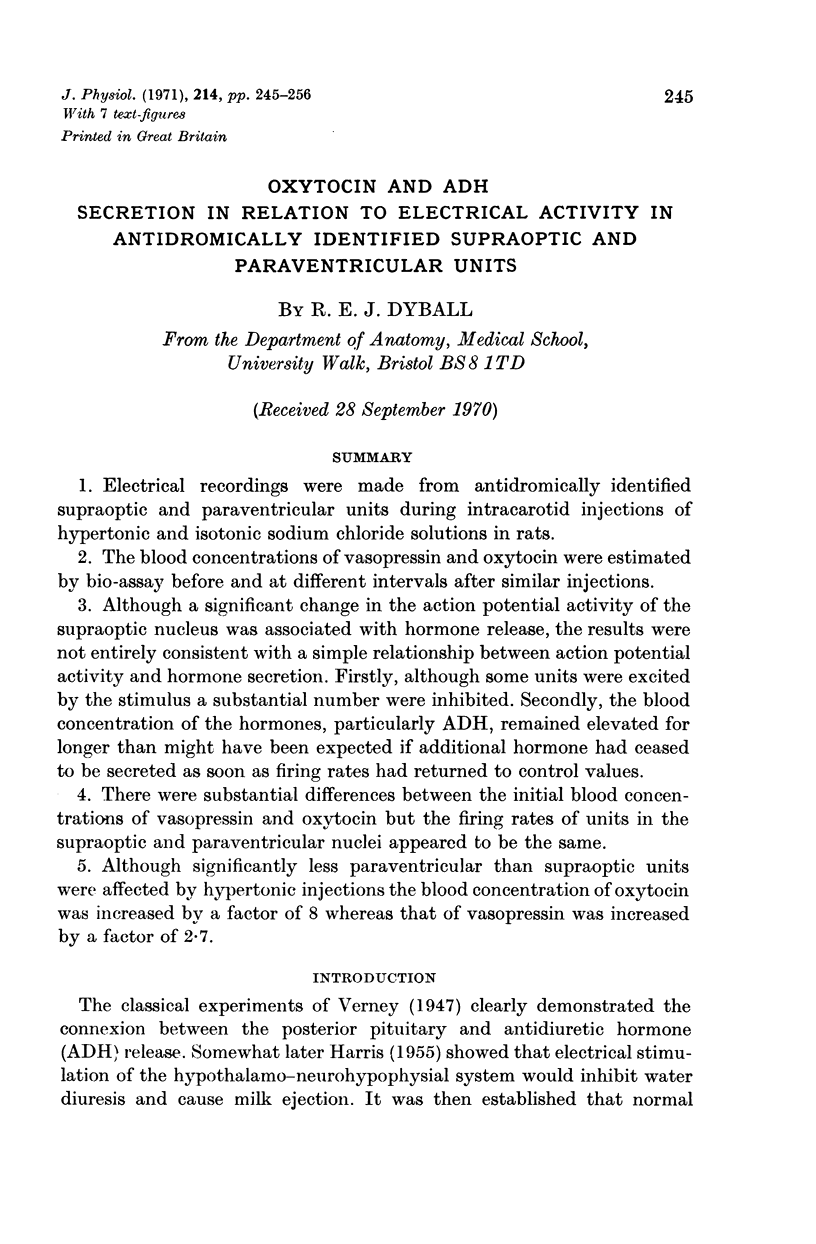
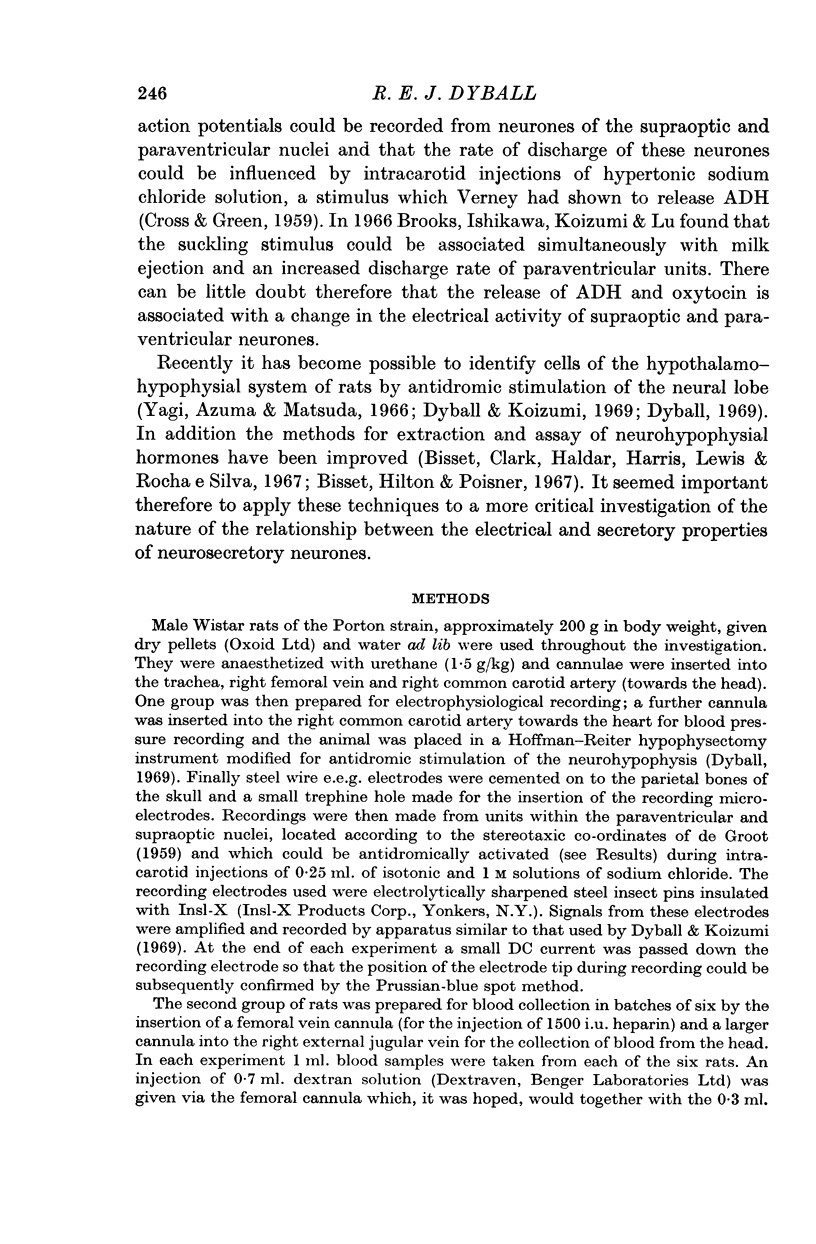
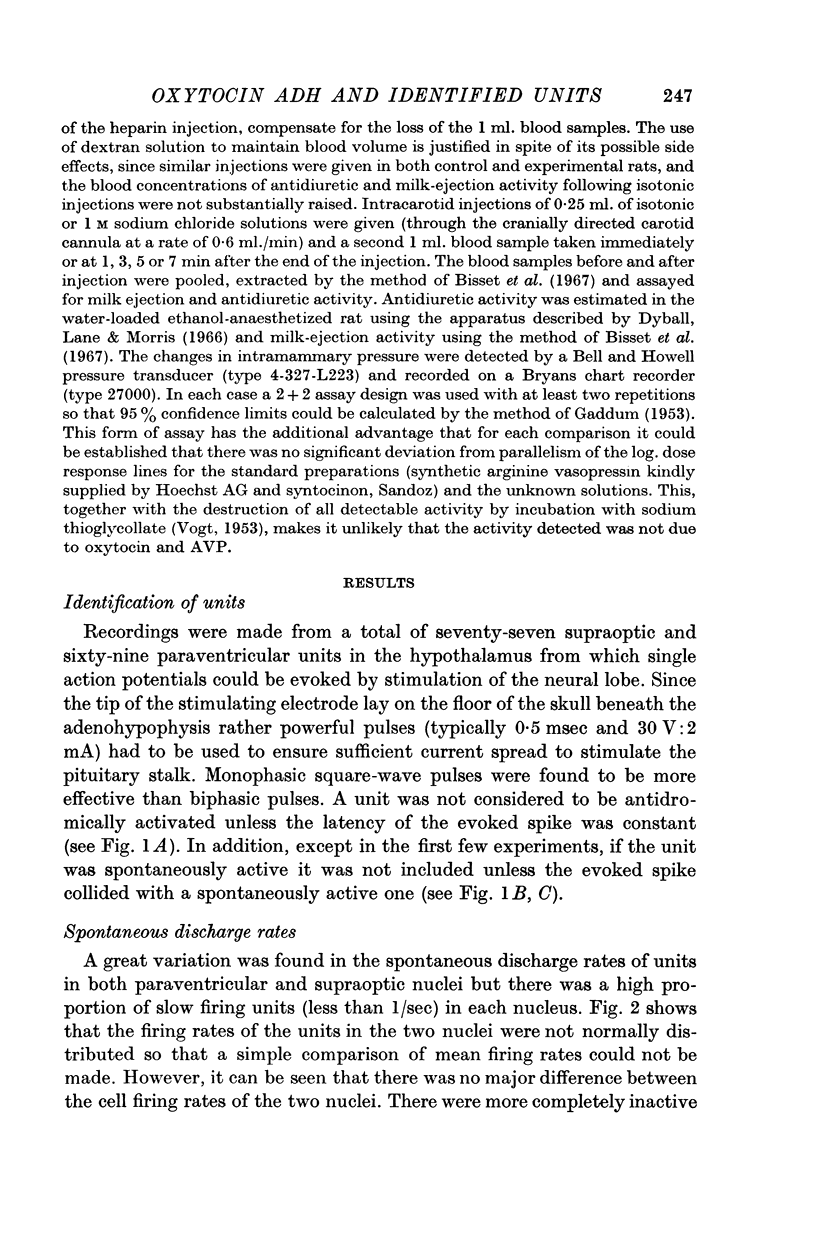
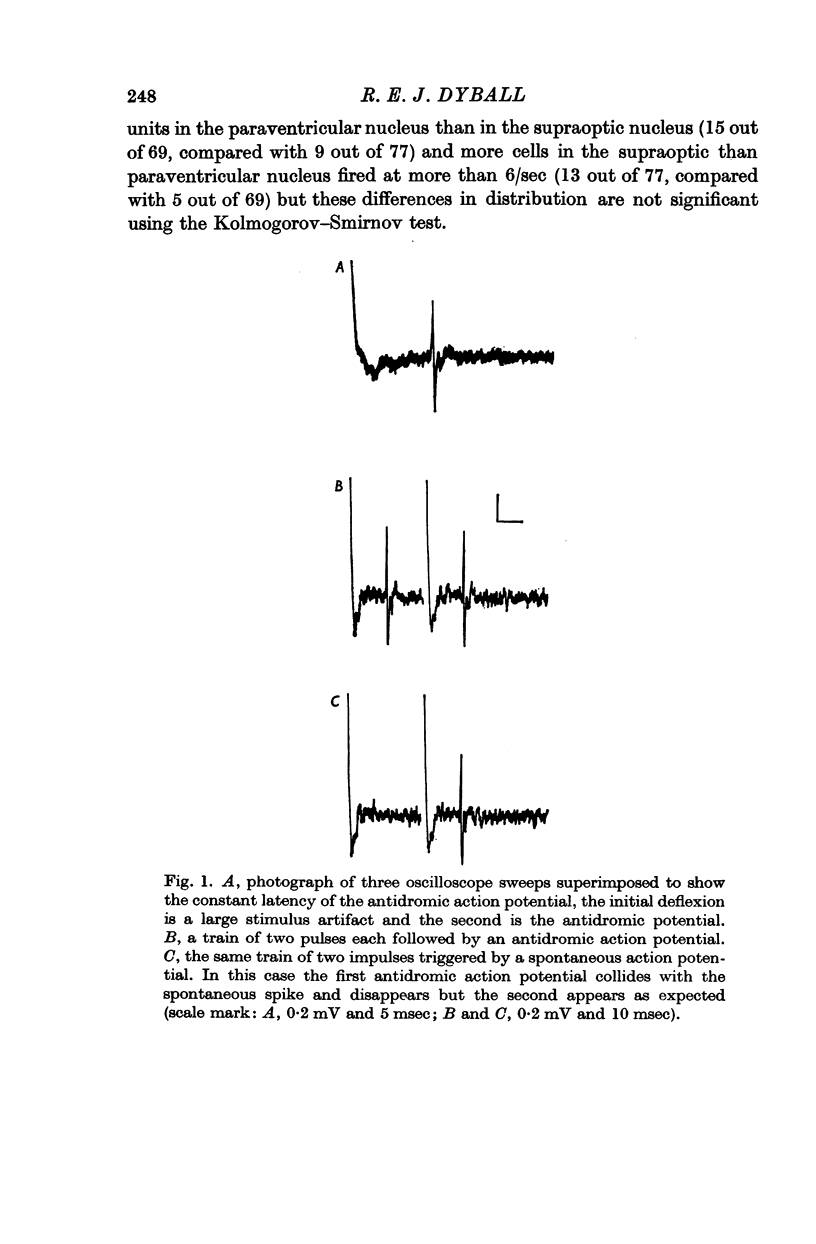
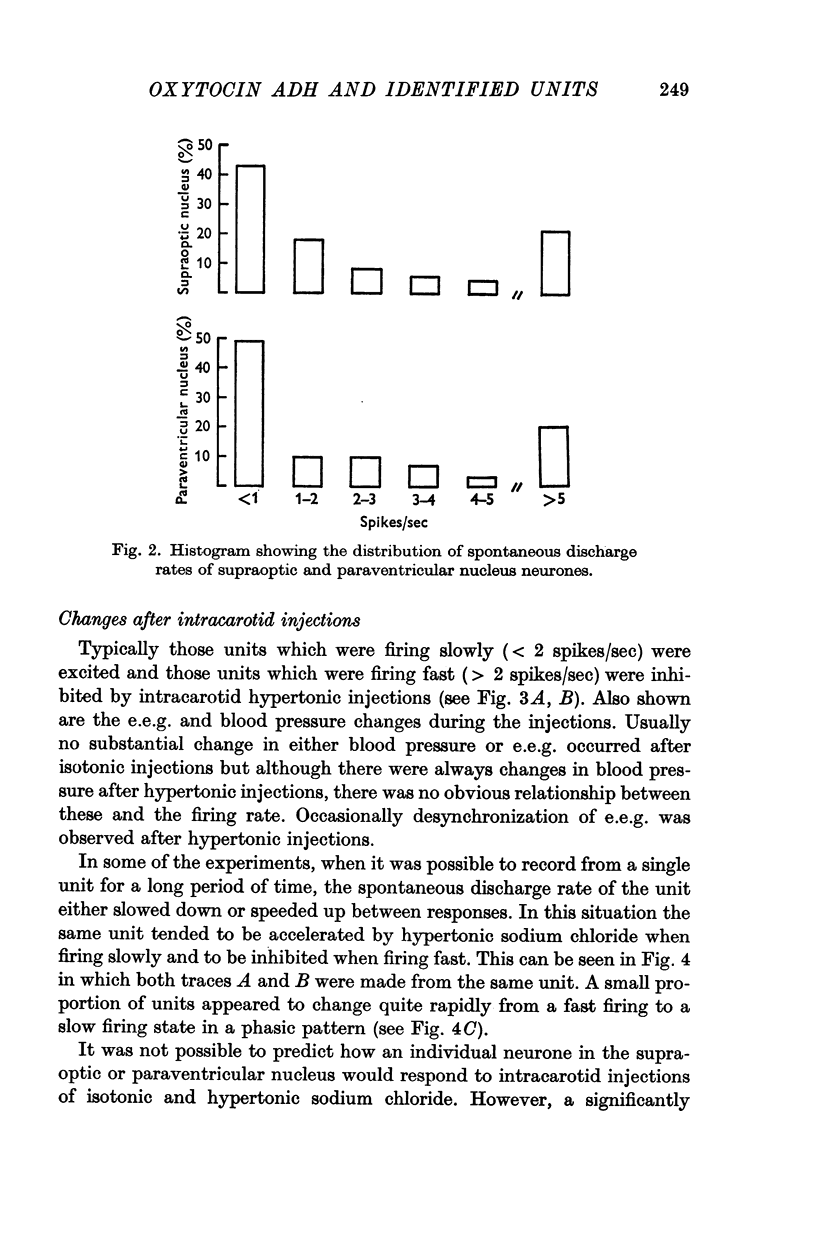
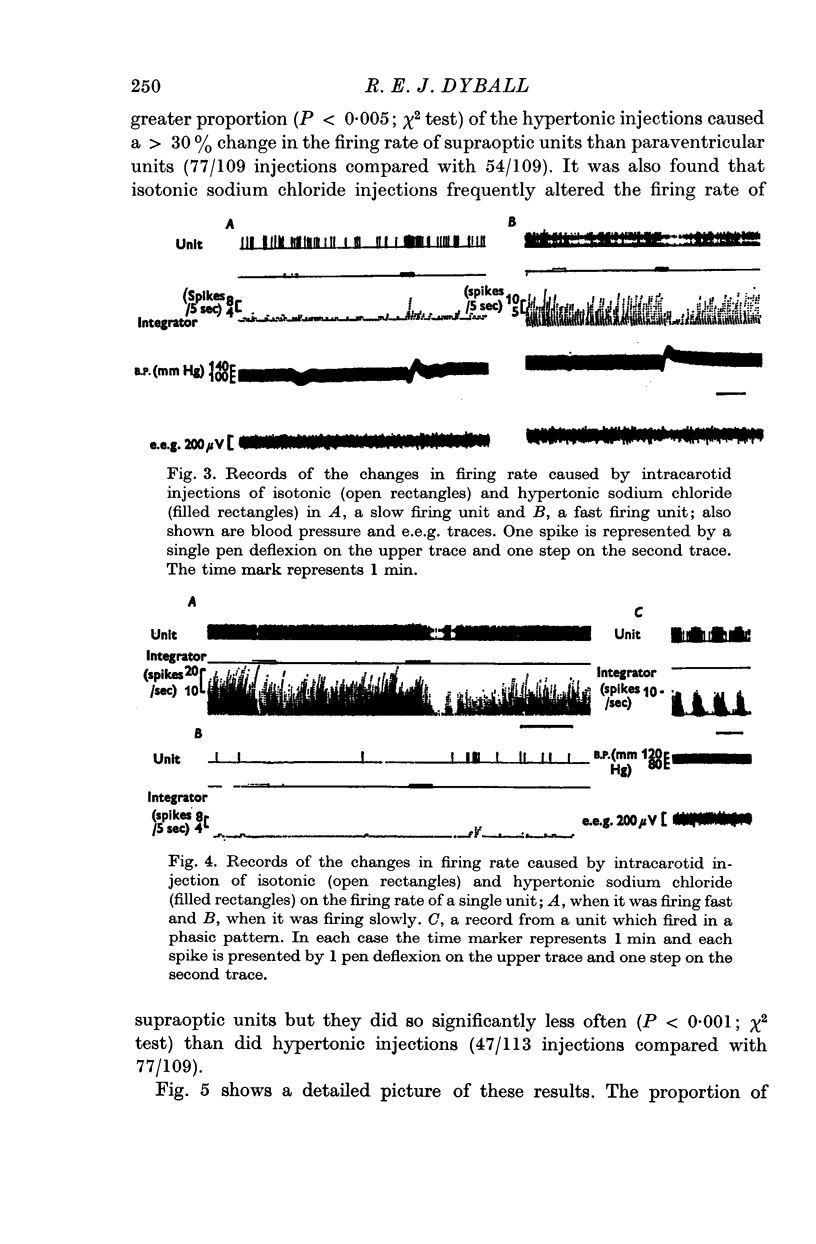
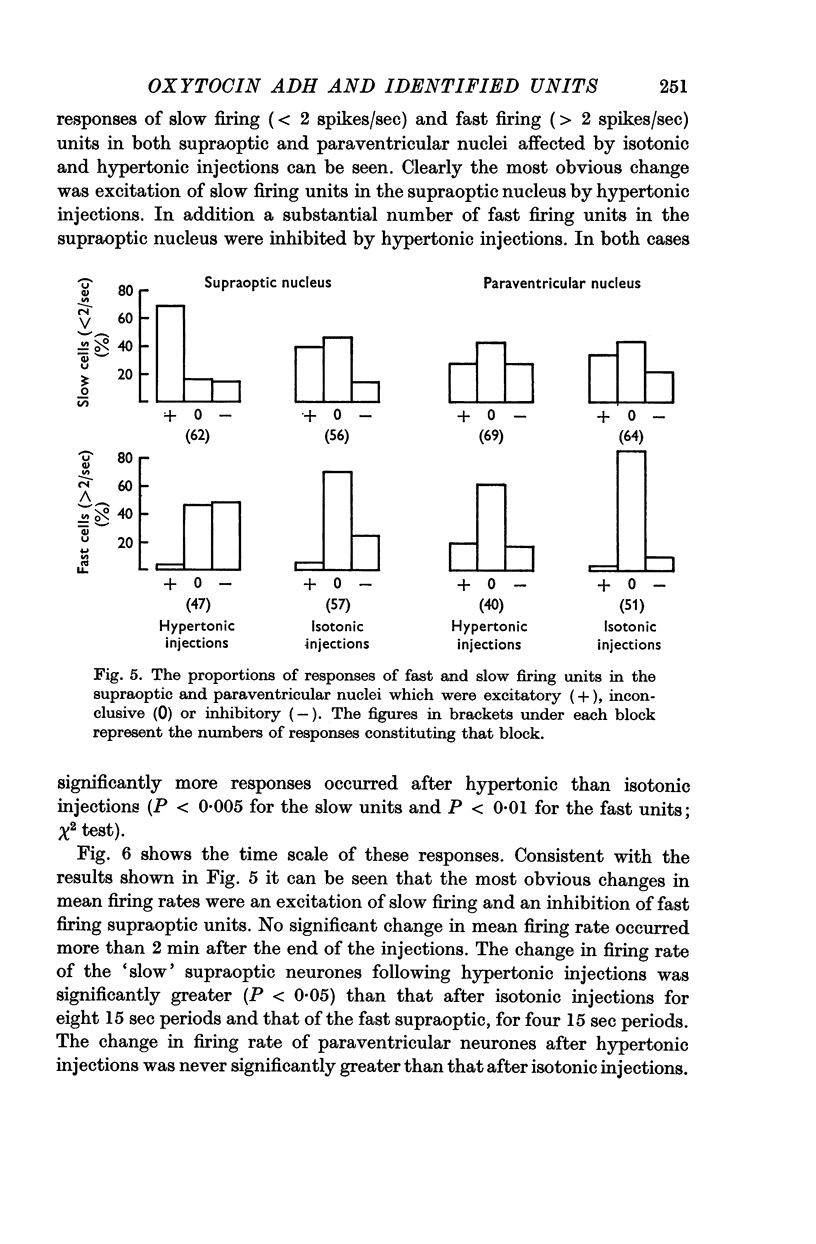
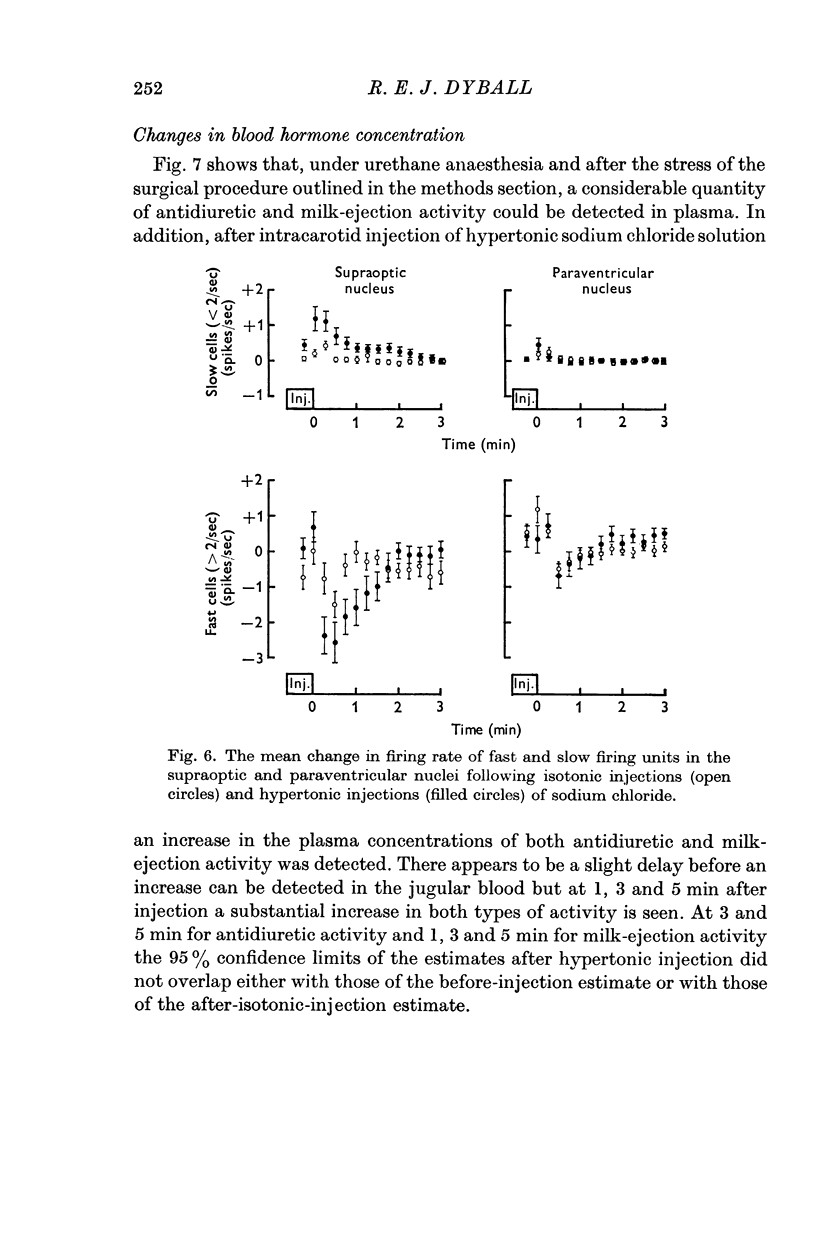
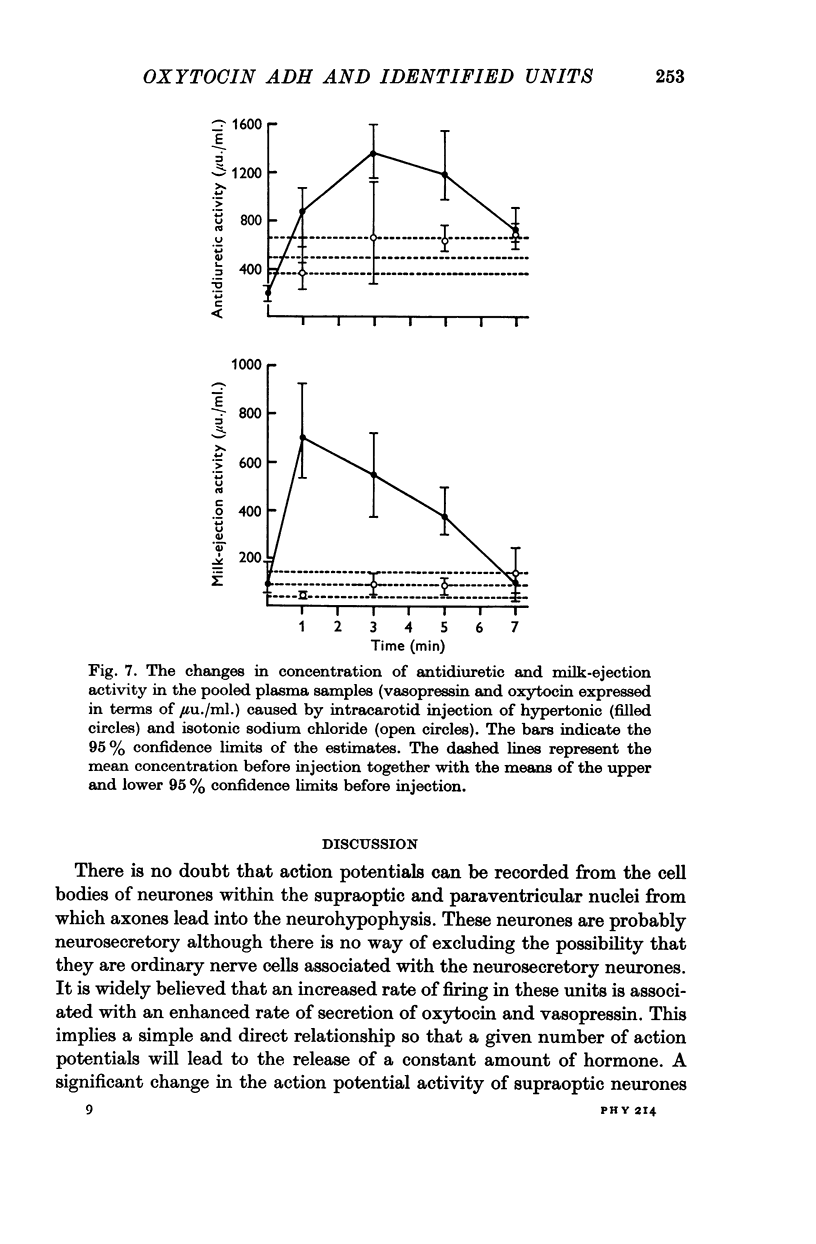
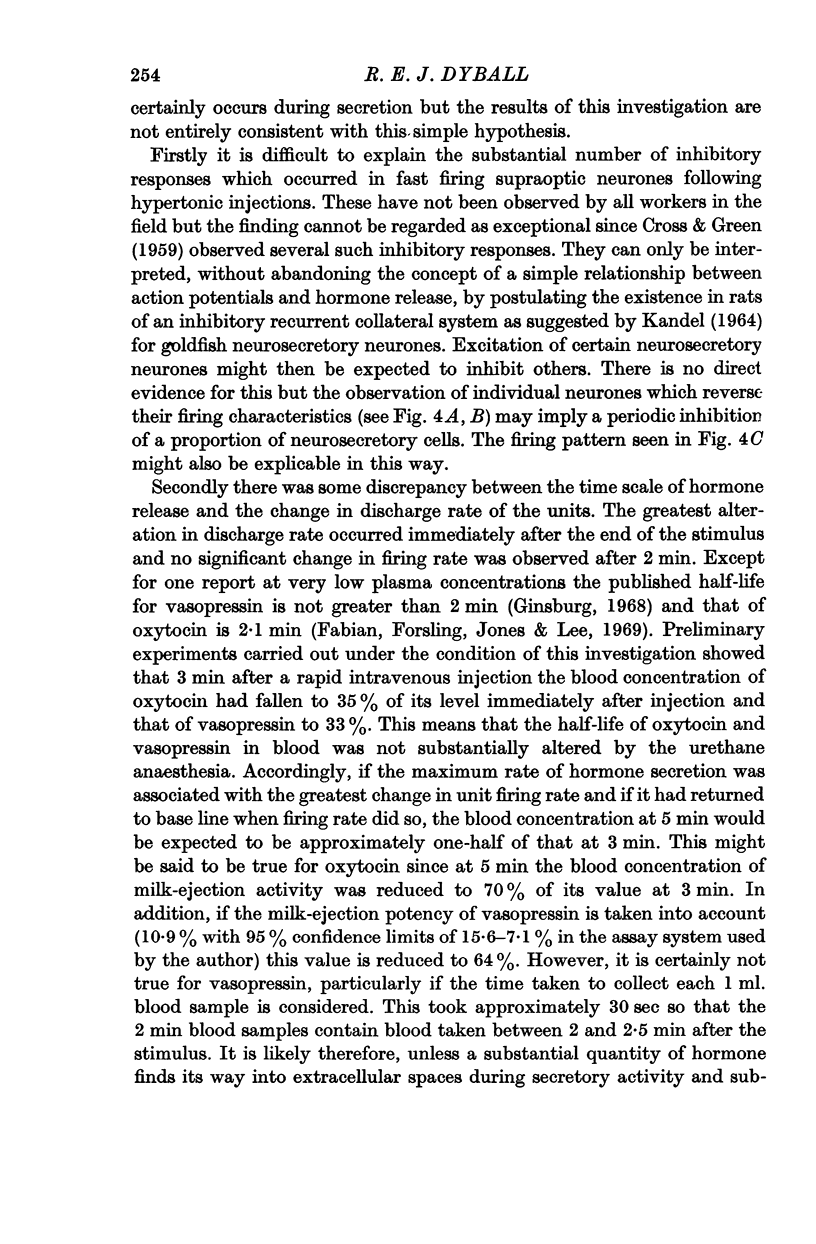
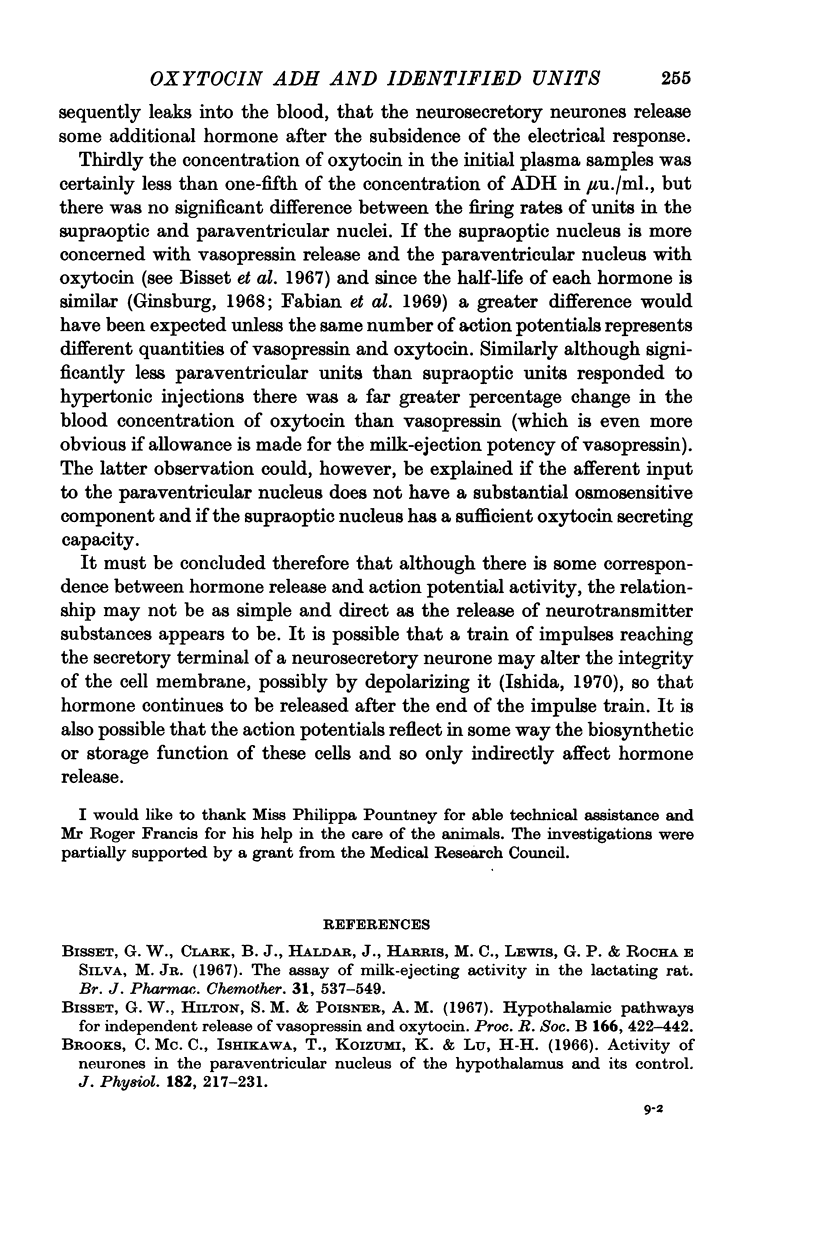
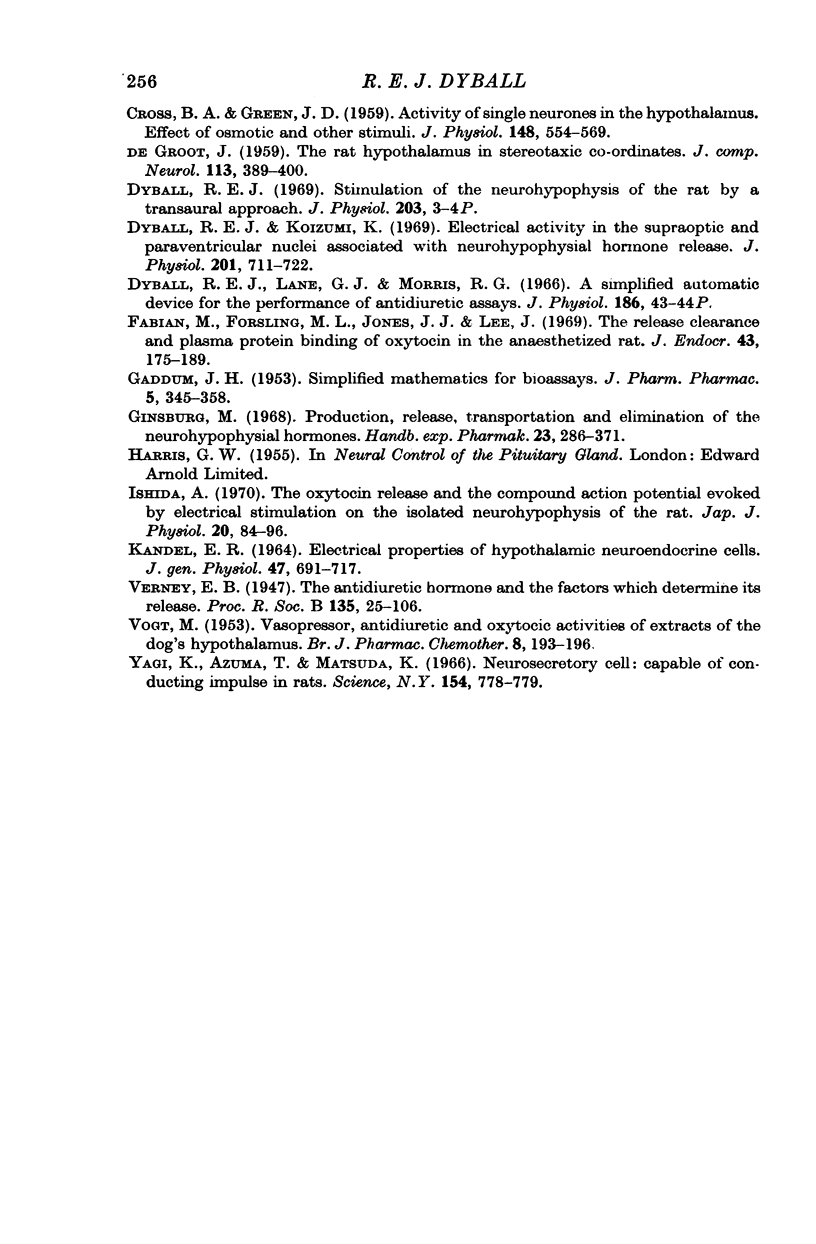
Selected References
These references are in PubMed. This may not be the complete list of references from this article.
- Bisset G. W., Clark B. J., Haldar J., Harris M. C., Lewis G. P., Rocha e Silva R., Jr The assay of milk-ejecting activity in the lactating rat. Br J Pharmacol Chemother. 1967 Nov;31(3):537–549. doi: 10.1111/j.1476-5381.1967.tb00418.x. [DOI] [PMC free article] [PubMed] [Google Scholar]
- Brooks C. M., Ishikawa T., Koizumi K., Lu H. H. Activity of neurones in the paraventricular nucleus of the hypothalamus and its control. J Physiol. 1966 Jan;182(1):217–231. doi: 10.1113/jphysiol.1966.sp007820. [DOI] [PMC free article] [PubMed] [Google Scholar]
- CROSS B. A., GREEN J. D. Activity of single neurones in the hypothalamus: effect of osmotic and other stimuli. J Physiol. 1959 Oct;148:554–569. doi: 10.1113/jphysiol.1959.sp006306. [DOI] [PMC free article] [PubMed] [Google Scholar]
- Dyball R. E., Koizumi K. Electrical activity in the supraoptic and paraventricular nuclei associated with neurohypophysial hormone release. J Physiol. 1969 May;201(3):711–722. doi: 10.1113/jphysiol.1969.sp008783. [DOI] [PMC free article] [PubMed] [Google Scholar]
- Dyball R. E., Lane G. J., Morris R. G. A simplified automatic device for the performance of antidiuretic assays. J Physiol. 1966 Oct;186(2):43P–44P. [PMC free article] [PubMed] [Google Scholar]
- Dyball R. E. Stimulation of the neurohypophysis of the rat by a transaural approach. J Physiol. 1969 Jul;203(1):3P–4P. [PubMed] [Google Scholar]
- Fabian M., Forsling M. L., Jones J. J., Lee J. The release, clearance and plasma protein binding of oxytocin in the anaesthetized rat. J Endocrinol. 1969 Feb;43(2):175–189. doi: 10.1677/joe.0.0430175. [DOI] [PubMed] [Google Scholar]
- GADDUM J. H. Simplified mathematics for bioassays. J Pharm Pharmacol. 1953 Jun;5(6):345–358. doi: 10.1111/j.2042-7158.1953.tb13996.x. [DOI] [PubMed] [Google Scholar]
- Ishida A. The oxytocin release and the compound action potential evoked by electrical stimulation on the isolated neurohypophysis of the rat. Jpn J Physiol. 1970 Feb 15;20(1):84–96. doi: 10.2170/jjphysiol.20.84. [DOI] [PubMed] [Google Scholar]
- KANDEL E. R. ELECTRICAL PROPERTIES OF HYPOTHALAMIC NEUROENDOCRINE CELLS. J Gen Physiol. 1964 Mar;47:691–717. doi: 10.1085/jgp.47.4.691. [DOI] [PMC free article] [PubMed] [Google Scholar]
- VOGT M. Vasopressor, antidiuretic, and oxytocic activities of extracts of the dog's hypothalamus. Br J Pharmacol Chemother. 1953 Jun;8(2):193–196. doi: 10.1111/j.1476-5381.1953.tb00777.x. [DOI] [PMC free article] [PubMed] [Google Scholar]
- Yagi K., Azuma T., Matsuda K. Neurosecretory cell: capable of conducting impulse in rats. Science. 1966 Nov 11;154(3750):778–779. doi: 10.1126/science.154.3750.778. [DOI] [PubMed] [Google Scholar]
- de GROOT The rat hypothalamus in stereotaxic coordinates. J Comp Neurol. 1959 Dec;113:389–400. doi: 10.1002/cne.901130304. [DOI] [PubMed] [Google Scholar]


